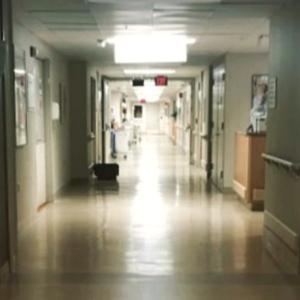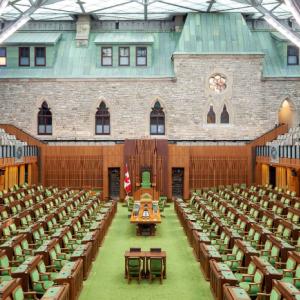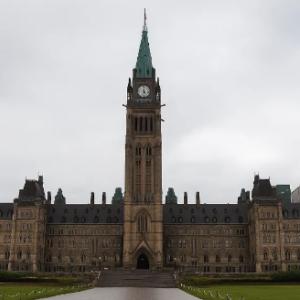We need to learn from COVID — before it's too late
Five years into an ongoing pandemic, we need to know how to face the next one.
Post-incident debriefs are common practice in emergency medicine, trauma, and disaster medicine. They're a chance for to teams celebrate what went well, review what could have been done better, and what processes need improvement so the team performs better when the next patient in cardiac arrest or with a gunshot wound rolls in.
After a particularly tragic situation that hits too close to home, like a child’s death, a team also debriefs to both process the trauma and provide emotional support.
Clearly, the ongoing COVID-19 pandemic represents the biggest global health disaster in living memory. Yet, the Canadian government and the provincial and territorial governments have refused to hold an independent COVID-19 Inquiry into the pandemic response.
During these past five years of the ongoing COVID-19 pandemic, everyone has experienced some form or other of trauma. Unfortunately, it seems that for our political leaders and many amongst us, the preferred coping strategy is to forget COVID as quickly as possible and move on.
For years now, political and public health leaders along with mainstream media have been talking about the COVID pandemic in the past tense, with phrases like “post-pandemic," “after COVID” and “post-COVID." So much so, that last December the WHO director general had to remind government leaders that the COVID-19 pandemic was not over, only its emergency phase was.
We cannot talk about COVID in the past tense. It’s still with us, it still causes acute disease and ‘long COVID,' and it still kills.
– Tedros Adhanom Ghebreyesus, WHO Director-General
Unfortunately, “reflection deficit disorder,” or collective amnesia, is not the remedy for collective trauma. Refusing to reflect on what went well, what went wrong, and what could be done better both now and going forward is simply irresponsible. It opens the door to useless and expensive sham pandemic reviews (e.g. B.C. and Alberta’s) — or worse, a rewriting of history by those who were in charge of the pandemic response, and by libertarian think-tanks or anti-science groups such as the Urgency of Normal.
The purpose of a COVID inquiry is not about blaming and shaming but about learning and remedying current gaps and weaknesses now so that we can not only control the ongoing pandemic, but also be better prepared to manage the next one.
'Precautionary principle' saved us during SARS
Imagine if, after Canada’s tainted blood tragedy in the late 1970s and 1980s – at the time, the worst public health catastrophe in Canada’s history – there had never been a Commission of Inquiry on Canada’s Blood System because Canadian Red Cross leaders feared looking bad. The 1997 Krever Commission, as it came to be known, led to the reform of the national blood system and the creation of the Canadian Blood Services to replace the Canadian Red Cross. The changes made in response to the commission's recommendations helped restore Canadians’ confidence in the safety of the blood system.
Additionally, the Krever Commission introduced the “precautionary principle” into public health. Simply stated, when it comes to public health, err on the side of caution while waiting for definitive evidence.
This is precisely what the emergency team on duty at the Vancouver General Hospital did on March 7, 2003. When a sick traveler, returning from Hong Kong, presented to the emergency department, the emergency team took no risk, and with little delay, the patient was placed under respiratory isolation. An email from the BCCDC had warned about the possibility of a new strain of avian flu coming out of Asia. At the time, the term Severe Acute Respiratory Syndrome, or SARS, had not even been coined. That cautious decision saved lives and kept Vancouver safe.
The 2003-2007 Ontario SARS Commission restated the importance of the “precautionary principle."
Scientific knowledge changes constantly. Yesterday's scientific dogma is today's discarded fables. When it comes to worker safety in hospitals, we should be driven […] by the precautionary principle that reasonable steps to reduce risk should not await scientific certainty.
– Justice Archie Campbell, The SARS Commission
Nowhere was the precautionary principle more important during the COVID-19 pandemic than in the protection of frontline health-care providers and other essential workers. Had the precautionary principle been embraced by public health across Canada, the highest level of precaution would have been applied to mitigate viral transmission and prevent infection with a novel virus.
Airborne transmission: Science was always clear
It’s often said that “the science changed” about airborne transmission, but this statement ignores the realities of the scientific process. It’s sometimes the case with science that an existing paradigm may persist for a long time as a commonly held view, only later overturned as evidence against it piles up and finally tips the scales in favour of an alternative framework. Sometimes a paradigm rests on less than compelling evidence in the first place. This was the case for the WHO’s guidance around SARS-CoV-2 transmission, which emphasized the six-foot distancing rule based on the idea that the disease primarily spread via relatively large infectious particles, called droplets. But this idea has been stated in medical textbooks for generations as a fact, without any supporting citations.
The opposite idea – that SARS-CoV-2 spreads through the air on tiny aerosol particles that can linger in the air for hours – was already supported by hard data and incisive analyses. By early 2020, the information was there, for anyone who took the time to look at it.
There was also clear evidence from the first SARS outbreak in 2003 that airborne transmission was important. A particularly illustrative case occurred at the Amoy Gardens in Hong Kong, a multi-building highrise housing estate where over 300 residents were infected with SARS-CoV-1.
University of Hong Kong engineers and public health physicians came together to study how the infectious virus spread. They faced a conundrum: residents within the same building who had no direct contact with the index case or subsequently infected residents, became infected themselves, and the infection seemed to spread in vertical stacks of apartments, almost as if the virus was seeping through the floors and ceilings of the building.
Using SARS cases’ timing and distribution, floor and drain maps along with computational fluid dynamics, researchers were able to model the outbreak both within a building and beyond to surrounding buildings.
Starting with the WHO and HK government investigations, what they found was at once fascinating and creepy – the virus was spreading through the air in the drains. The design of the drainage at Amoy Gardens created a vertical stack of air transmission within the building, through the bathrooms’ floor drains. Dried U traps in the drains created a connection with the soiled vertical stack (drainage pipes) spanning the height of the building. Bathrooms’ fans and flushing of toilets contributed to the vertical upward flow of aerosols, akin to a chimney effect.
In early 2022, Hong Kong’s highly contagious Omicron BA.2 wave of the COVID-19 pandemic led to an explosion in outbreaks in highrise residential buildings, confirming the vertical transmission of SARS-Cov-2 aerosols seen at the Amoy Gardens during SARS.
When some of the same researchers published another paper in 2014, titled Severe Acute Respiratory Syndrome Beyond Amoy Gardens: Completing the Incomplete Legacy, they included this prescient warning: Infectious disease scientists should keep an open mind to all possible routes of transmission by objectively analyzing the available data, instead of emphasizing too much their historical understanding of models for person-to-person transmission.
Subsequent events such as the Skagit Valley Chorale superspreader incident in May 2020 underlined the aerosol transmission mechanism for the disease. If the science was clear back then for anyone who went looking for it, it is now in the realm of accepted fact. SARS-CoV-2 transmission occurs primarily by the aerosol route, and the matter is no longer open for any sort of serious scientific debate.
Stuck in history, resisting a paradigm shift
The WHO initially denied that COVID was airborne, with a notorious incident that involved the WHO director general correcting himself in public saying that he meant that it was airborne “in the military sense." The WHO then doubled down on this, in the critical early days of the pandemic, by issuing a “fact check” that claimed that COVID was NOT airborne. This supposed fact check persists on their social media page today, and is emblematic of the larger issue with the public health response to COVID – the refusal to admit mistakes.
The WHO eventually, and grudgingly, accepted that COVID is indeed airborne, and some of its leaders subsequently expressed regret over the mistake. But this obfuscation has come at a heavy price. For years, public health and infection prevention and control (IPC) leaders in Canada, in the U.S.A. and U.K., followed the WHO’s lead in spreading confusion and contradiction over airborne spread.
To this day, there is no clarity on the issue. Many guidances for limiting viral spread (such as this one from the CDC from – incredibly – December 2024, and this one from B.C. Ministry of Health, issued January 2025) still emphasize handwashing over measures that actually work against airborne viruses, such as respirators (N95, KN95), ventilation, and air filtration.
Health-care workers keep getting reinfected breathing infectious aerosols at their workplace, with predictable consequences, absences due to illness, development of Long COVID and other post-COVID conditions resulting in health-care worker shortages.
Tragically, it is not only health care and long-term care workers who are being repeatedly infected with COVID-19 but also their patients. At the 78 Canadian hospitals participating in the Canadian Nosocomial Infection Surveillance Program, the viral infection data for the week of Feb. 23, 2025 show that 27 per cent of hospitalized patients diagnosed with COVID-19 had been infected while admitted for another medical reason. These harmful hospital acquired infections are preventable with less handwashing and more air cleaning.
Air cleaning could reduce COVID, influenza, RSV, measles
Doing so would not only result in fewer COVID outbreaks but also a reduction in influenza, RSV, measles, and even norovirus outbreaks.
On March 6, 2025, B.C. reported twenty-seven long-term care facilities and nine hospitals with active influenza outbreaks. Worse still, five LTC influenza outbreaks involved the entire facility (“whole of facility outbreaks”).
These whole of facility outbreaks are infection prevention and control (IPC) failures, both failing to prevent and failing to control infections. Whole of facility outbreaks should never happen and should automatically trigger a critical incident review of IPC measures’ effectiveness and compliance, and most importantly, raise serious concerns about the functioning of the facility’s HVAC system. We have seen this in the past with COVID-19 at Vigi Mont-Royal in Montreal where the facility’s HVAC system was malfunctioning and infectious aerosols accumulated indoors for everyone to breathe in. There,148 staff and all of the 226 residents were infected; 70 residents tragically lost their lives.
If we fail to learn from Vigi Mont-Royal’s disaster, these deaths will have been a double tragedy.
In June 2023, the American Society of Heating Refrigerating and Air-Conditioning Engineers (ASHRAE) released a new standard for the control of infectious aerosols: “Standard 241 establishes minimum requirements to reduce the risk of airborne disease transmission, such as SARS-COV-2 virus, which causes COVID-19, the flu virus and other pathogens in buildings like single and multi-family homes, offices, schools and health-care facilities." Had this new standard been in place in 2020, Vigi Mont-Royal’s tragedy would never have happened.
We can do better, when we know better.
Refusing to know better by not holding an independent COVID inquiry (both federally and provincially/territorially) commits us to a “rinse and repeat” of the same errors — and leaves all Canadians vulnerable at a time when the next pandemic threat is already here.
---
Dr. Lyne Filiatrault is a retired emergency physician who spent most of her 25-year career at Vancouver General Hospital. For 15+ years, she served as VGH Emergency Department Quality Improvement director. She is now a member of the Canadian Aerosol Transmission Coalition and continues to advocate for preventing the acute and longer term harms of SARS-CoV-2 infections.
Dr. Arijit Chakravarty is the CEO of Fractal Therapeutics, which focuses on applying mathematical modeling to drug discovery and development. Over the past five years, he has led an interdisciplinary team of volunteers in publishing over twenty peer-reviewed papers on COVID-19.
Dr. T. Ryan Gregory is a professor of evolutionary biology at the University of Guelph. From 2018 to 2022 he was Chair of the Department of Integrative Biology and from 2014-2021 he was Editor-in-Chief of the journal Evolution: Education and Outreach. Find him on bluesky.









